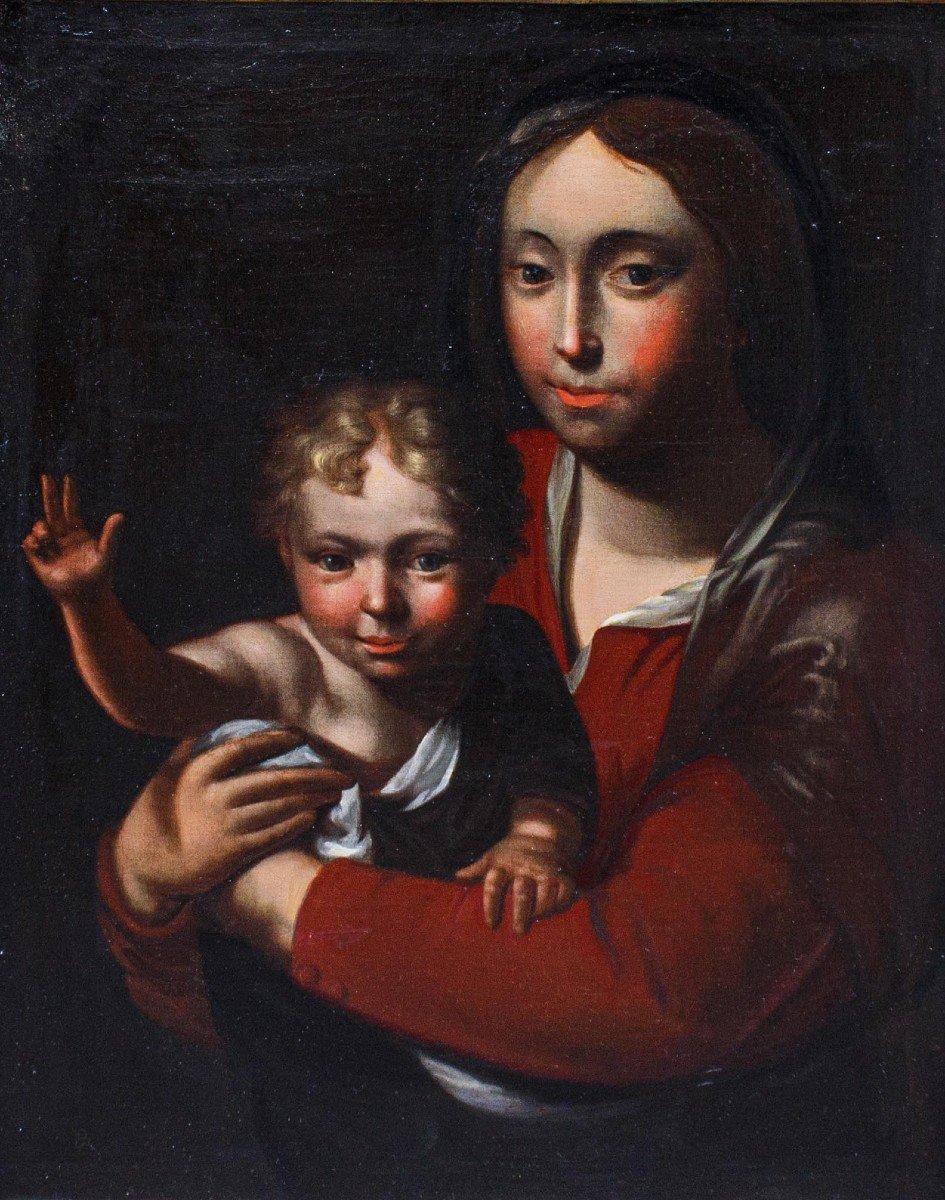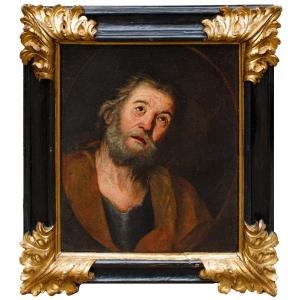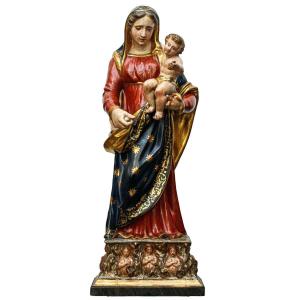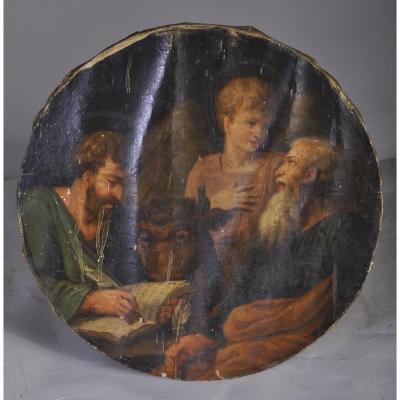Madonna and Child blessing
Oil on canvas, 62 x 51 cm
With frame, cm 83 x 71
The bright blush that lights the cheeks of the Virgin and Child, velvety in nuance that recalls the most sentimental expressions of Giovanni Stefano Danedi said Montalto (1612-1690)is indebted in turn to the tradition encouraged by the greatest artists of the early seventeenth century Ambrosian such as Morazzone, Cerano and Procaccini. The material intensity and the smooth shape assumed by the characters also inserts the composition in the prevailing Bergamo pictorial costume piloted, at the beginning of the seventeenth century, by Enea Salmeggia, Gian Paolo Cavagna, Francesco Zucco and, to a lesser extent, by Pietro Ronzelli. These artists, all dead by 1630, marked the territory in an incontrovertible way, so much so that critics still wonder whether it is appropriate for the generations of artists following them to talk in terms of post-psalm school or not. The seventeenth-century canvas, with a similar subject, now conserved at Palazzo Marinoni Barca (Clusone, Bergamo), if it does not provide a clue to the identity of the present also suggests the many references to different artists. A Giacomo Cotta (1627-1689) first, very active on Bergamo soil but foreign to the local pictorial tradition that for two centuries was indebted to the Venetian culture, that with his Madonna with Child and Franciscan saint of the Monastery of the Visitation of Alzano Lombardo (BG) joins the present in the deep look and cut of the eyes of the Virgin, promoting a moderate and intimate composition. Cristoforo Roncalli known as il Pomarancio (1553 ca - 1626) in the Madonna and Child Blessing (Urbino, Gallerie Nazionale delle Marche) also anticipates the present arrangement of the figures and the geometric perfection of the face of Mary.






































 Le Magazine de PROANTIC
Le Magazine de PROANTIC TRÉSORS Magazine
TRÉSORS Magazine Rivista Artiquariato
Rivista Artiquariato